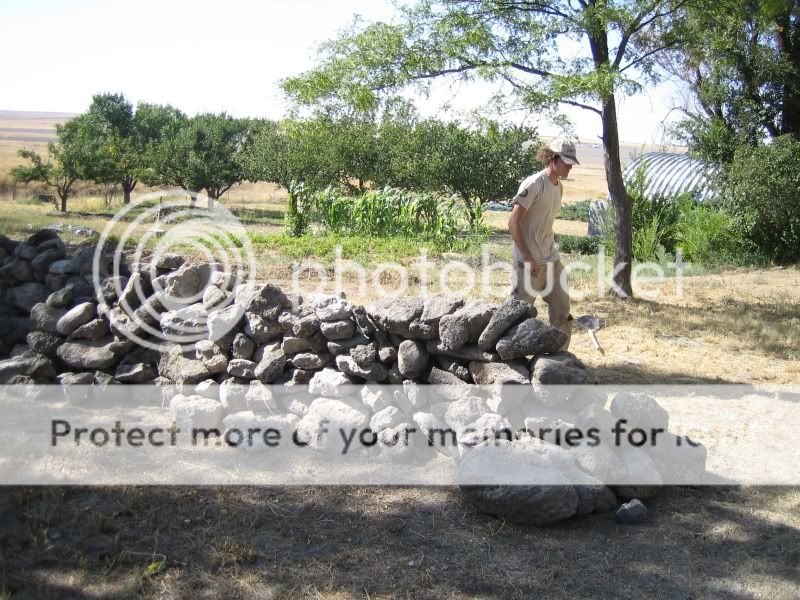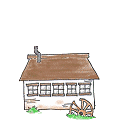
 3
3




 1
1




Brenda
Bloom where you are planted.
http://restfultrailsfoodforestgarden.blogspot.com/








Susan Monroe wrote:
The more organic matter that is in the soil, the more water it is going to hold. It's that issue by itself that created American's growing Dust Bowl (old and new).
Does Holzer say if his water table is close to the surface, or if he has bedrock holding the water in?
Sue




paul wheaton wrote:
If you stack a pile of rocks, air can move through the pile. And the rocks in the middle will be quite cool. If humid air moves through the pile, water will condense on the cooler rocks, thus creating a poor man's drip irrigation system.




Brenda
Bloom where you are planted.
http://restfultrailsfoodforestgarden.blogspot.com/
 3
3





Permaculture is a gestalt ... a study of the whole. Not just how to produce more and better food, but how human life on the planet affects and is affected by the surrounding environment.
Bill Kearns




[img]http://i109.photobucket.com/albums/n52/havlik1/permie%20pics2/permiepotrait3pdd.jpg[/img]
"One cannot help an involuntary process. The point is not to disturb it. - Dr. Michel Odent








Permaculture is a gestalt ... a study of the whole. Not just how to produce more and better food, but how human life on the planet affects and is affected by the surrounding environment.
Bill Kearns
 1
1




Brenda Groth wrote:very little naturally occurring rock on our property, we do save any that we do find to use here..but there is not much
"the qualities of these bacteria, like the heat of the sun, electricity, or the qualities of metals, are part of the storehouse of knowledge of all men. They are manifestations of the laws of nature, free to all men and reserved exclusively to none." SCOTUS, Funk Bros. Seed Co. v. Kale Inoculant Co.





Sustainable Plantations and Agroforestry in Costa Rica




9anda1f wrote:
The talus wall was stacked in late August, so about six weeks.








 Bill
BillPermaculture is a gestalt ... a study of the whole. Not just how to produce more and better food, but how human life on the planet affects and is affected by the surrounding environment.
Bill Kearns
 1
1




 1
1








 1
1




 1
1




 2
2




 1
1




How much rainfall do you have?


Permaculture is a gestalt ... a study of the whole. Not just how to produce more and better food, but how human life on the planet affects and is affected by the surrounding environment.
Bill Kearns




 1
1








 1
1




 1
1








 1
1




 2
2








 1
1




















Jennifer Hall wrote:Maybe I will plant us a root bridge even, to grow alongside a wooden bridge maybe.
"the qualities of these bacteria, like the heat of the sun, electricity, or the qualities of metals, are part of the storehouse of knowledge of all men. They are manifestations of the laws of nature, free to all men and reserved exclusively to none." SCOTUS, Funk Bros. Seed Co. v. Kale Inoculant Co.










Permaculture is a gestalt ... a study of the whole. Not just how to produce more and better food, but how human life on the planet affects and is affected by the surrounding environment.
Bill Kearns
 1
1




 If you water a tree with a tap root for several years, the tap root disappears. Not ever doing that keeps your tap roots and makes your tap rooted plants and surrounding plants more resiliant.
If you water a tree with a tap root for several years, the tap root disappears. Not ever doing that keeps your tap roots and makes your tap rooted plants and surrounding plants more resiliant.



paul wheaton wrote:
6) Plant leaves do an air exchange. I am pretty sure it is usually through the bottom of the leaves. We've all heard about a plant taking in carbon dioxide and giving off oxygen. Well, as part of this, the plant gives off a bit of moisture/humidity. When things get dry, the plant curls its leaves downward a bit, thus sorta/kinda shrinking teeny tiny holes for the air exchange, and thus, losing less moisture. My impression is that irrigated plants sorta "forget" how to do that.
find religion! church
kiva! hyvä! iloinen! pikkumaatila
get stung! beehives
be hospitable! host-a-hive
be antisocial! facespace

|
It's never done THAT before. Explain it to me tiny ad:
Play Your Way to a Sustainable Lifestyle: Uncover Permaculture Principles with Each Card
https://gardener-gift.com/
|





